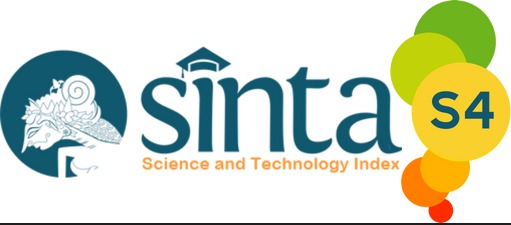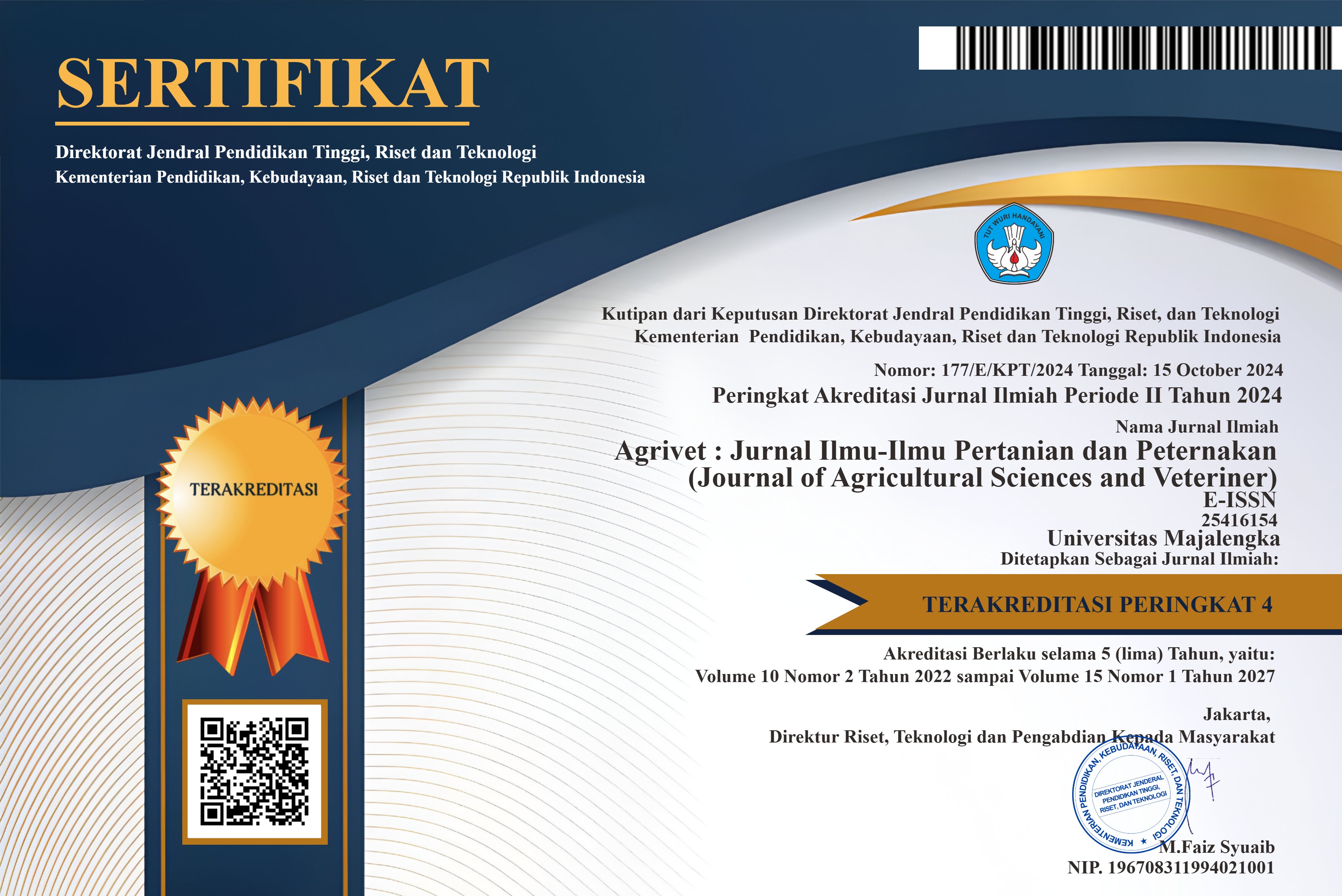Tinjauan teknik pengeringan dalam proses pemanasan untuk produksi pakan ternak
DOI:
https://doi.org/10.31949/agrivet.v13i1.13794Abstract
Drying is a crucial heat processing technique in animal feed production, used to reduce moisture content, extend shelf life, and maintain nutritional stability. Various methods have been applied, ranging from conventional convective drying (using ovens and solar energy) to advanced technologies such as microwave, infrared, freeze drying, vacuum, and hybrid drying. Each method has specific advantages and limitations in terms of energy efficiency, preservation of bioactive compounds, and effects on digestibility and feed palatability. This review examines the working principles of each method and their impact on nutrient quality, with a focus on process efficiency and the final feed value. Based on current literature, freeze and vacuum drying are superior in preserving heat-sensitive vitamins and compounds, while spray and fluidized bed drying enhance uniformity and feed intake. On the other hand, conventional techniques remain relevant due to their cost-effectiveness and simplicity. Therefore, when selecting a drying method, it is essential to consider the characteristics of the feed material and the formulation objective to ensure high-quality and sustainable feed production.
Keywords:
drying techniques, feed nutrition, bioactive compounds, energy efficiency, palatabilityDownloads
References
Abdulvahitoglu, A., Abdulvahitoglu, A., & Cengiz, N. (2024). A comprehensive analysis of apricot drying methods via multi‐criteria decision making techniques. Journal of Food Process Engineering, 47(10), 1–18. https://doi.org/10.1111/jfpe.14759
Aquino, D., Del Barrio, A., Trach, N. X., Hai, N. T., Khang, D. N., Toan, N. T., & Van Hung, N. (2020). Rice straw-based fodder for ruminants. In Sustainable Rice Straw Management (pp. 111–129). Springer International Publishing. https://doi.org/10.1007/978-3-030-32373-8_7
Bampidis, V., Azimonti, G., Bastos, M. de L., Christensen, H., Kos Durjava, M., Kouba, M., López‐Alonso, M., López Puente, S., Marcon, F., Mayo, B., Pechová, A., Petkova, M., Ramos, F., Sanz, Y., Villa, R. E., Woutersen, R., Brantom, P., Chesson, A., Westendorf, J., … Dusemund, B. (2020). Safety and efficacy of turmeric extract, turmeric oil, turmeric oleoresin and turmeric tincture from curcuma longa l. Rhizome when used as sensory additives in feed for all animal species. EFSA Journal, 18(6). https://doi.org/10.2903/j.efsa.2020.6146
Chiofalo, B., Di Rosa, A. R., Lo Presti, V., Chiofalo, V., & Liotta, L. (2020). Effect of supplementation of herd diet with olive cake on the composition profile of milk and on the composition, quality and sensory profile of cheeses made therefrom. Animals, 10(6), 977. https://doi.org/10.3390/ani10060977
Chiofalo, V., Liotta, L., Lo Presti, V., Gresta, F., Di Rosa, A. R., & Chiofalo, B. (2020). Effect of dietary olive cake supplementation on performance, carcass characteristics, and meat quality of beef cattle. Animals, 10(7), 1176. https://doi.org/10.3390/ani10071176
El-Badawi, A., Hassan, A., Yacout, M., Khalel, M., & EL Naggar, S. (2022). To what extent dry moringa oleifera leaves supplementation couldinfluence growth performance of sheep and affect methane production. Egyptian Journal of Nutrition and Feeds, 25(3), 269–281. https://doi.org/10.21608/ejnf.2022.286662
Glatter, M., Bochnia, M., Goetz, F., Gottschalk, J., Koeller, G., Mielenz, N., Hillegeist, D., Greef, J. M., Einspanier, A., & Zeyner, A. (2017). Glycaemic and insulinaemic responses of adult healthy warm‐blooded mares following feeding with jerusalem artichoke meal. Journal of Animal Physiology and Animal Nutrition, 101(S1), 69–78. https://doi.org/10.1111/jpn.12669
Hynd, P. (2019). Animal nutrition. In Acta Universitatis Cibiniensis. Series E: Food Technology (Vol. 27, Issue 2). CSIRO Publishing. https://doi.org/10.1071/9781486309504
Ujong, A. E., Emelike, N. J. T., Ofiks, A., Ohanehi, H. A., & Olumide, B. A. (2024). Effect of drying methods and variety on the chemical composition, functional, and microbial properties of date flour. JSFA Reports, 4(12), 398–405. https://doi.org/10.1002/jsf2.221
Yilmaz, P., Demirhan, E., & Özbek, B. (2021). Microwave drying effect on drying characteristic and energy consumption of ficus carica linn leaves. Journal of Food Process Engineering, 44(10), 1–21. https://doi.org/10.1111/jfpe.13831
Published
How to Cite
Issue
Section
License
Copyright (c) 2025 Najwa Hegyra Gumilar, Nyimas Popi Indriani, Abun

This work is licensed under a Creative Commons Attribution-ShareAlike 4.0 International License.
An author who publishes in the Jurnal Agrivet agrees to the following terms:
- Author retains the copyright and grants the journal the right of first publication of the work simultaneously licensed under the Creative Commons Attribution-ShareAlike 4.0 License that allows others to share the work with an acknowledgment of the work's authorship and initial publication in this journal
- The author is able to enter into separate, additional contractual arrangements for the non-exclusive distribution of the journal's published version of the work (e.g., post it to an institutional repository or publish it in a book) with the acknowledgment of its initial publication in this journal.
- The author is permitted and encouraged to post his/her work online (e.g., in institutional repositories or on their website) prior to and during the submission process, as it can lead to productive exchanges, as well as earlier and greater citation of the published work












